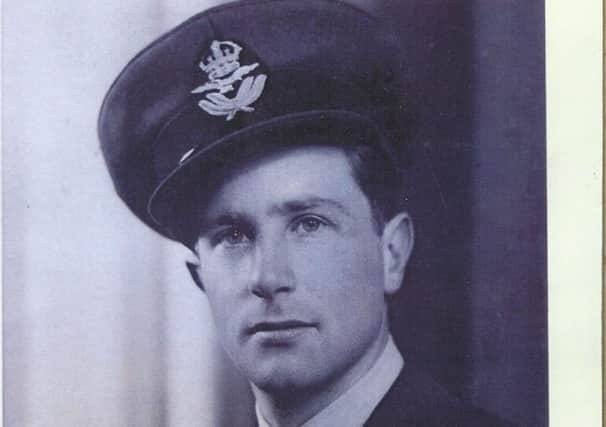Obituary: Leonard Ratcliff


Wing Commander Leonard Ratcliff DSO, DFC and Bar, pilot.
Born: 27 July, 1919, in Essex.
Died: 1 April, 2016, in Essex, aged 96.
Leonard Ratcliff was the last survivor of the RAF’s secret Special Duties No. 161 Squadron that delivered spies and clandestine supplies to Nazi-occupied Europe during the Second World War.
The squadron’s long, dangerous missions, flown low to avoid detection over hostile terrain, and carried out by moonlight so as to distinguish landing-grounds at dead of night, ranged as far as Norway, France, Holland, Belgium, Denmark and Poland.
Advertisement
Hide AdAdvertisement
Hide Ad“During the siege of Warsaw we were dropping supplies to the resistance just 20 yards from enemy lines,” Ratcliff recalled, of his part in the Allied effort to support the Polish Home Army in the Warsaw Uprising of 1944. No. 161’s complement of about 200 had to be replaced three times over in the course of the war: it lost 600 men. “I suppose you could say I’m lucky to be alive,” he reflected. Using Lysander, Halifax, and Stirling bombers, he piloted more than 70 missions over Europe with his crew.
Ratcliff, it is recorded, “landed in farm fields to drop and pick up agents and equipment, illuminated by the flashlights of resistance fighters”. He had as his navigator a Free French airman, Squadron Leader Philippe Livry, and also worked with a Norwegian, Per Hysindahl. “We trained agents to lay out runways using four bicycle torches and to avoid ploughed fields, cables or trees in the flightpath,” he explained. “We trained them well as our lives depended on it.” No. 161 flew from Tempsford aerodrome in Bedfordshire, which the authorities took care to disguise as “Gibraltar Farm”.
It was Ratcliff who on the night of 22 August 1943 dropped, at a destination north of Bordeaux, the SOE agent Yvonne Cormeau, code-named “Annette”. She is said to have been the inspiration for the fictional Scotswoman Charlotte Gray, heroine of the novel of that name by Sebastian Faulks. A film starring Cate Blanchett as Gray was made in 2001.
He married, in 1939, Bet Stewart, a sea-captain’s daughter who sprang from the Stewarts of Appin. They would have three sons and a daughter: Rupert, Clive, Robin and Tessa. Bet died in 1987. He married, in 1989, Dorothy Radford, who with his children and a sister, Cynthia, survives him.
Leonard Fitch Ratcliff was born at Maldon, Essex, the son of a farmer, and educated at Felsted School, Dunmow, Essex. He was one of six siblings, three boys and three girls. In childhood he admired Manfred von Richthofen, the “Red Baron”, and devoured tales of the German aviator’s daring and chivalry.
Named Leonard – and known as “Len” – after an uncle who had died of wounds sustained in the First World War, Ratcliff joined the RAF Volunteer Reserve in 1939. A diminutive figure, he had physical training from the British champion heavyweight boxer and RAF corporal Eddie Phillips. He reached aircraft controls by having engineers fix wooden blocks to the rudder pedals, and by asking his flight mechanic to push him forward so that his hand made the levers reach their extremity as he opened the throttle on take-off.
He flew solo after six and a half hours’ dual training, then practised for 51 hours in a Tiger Moth. He came “above average” in his examinations, and gained his wings in July 1941. As Flying Officer he skippered crews flying Handley Page Hampden bombers with No 49 Squadron from Scampton in Lincolnshire. On one night raid in December 1941 he bombed a synthetic rubber plant at Hűls in the Rhineland under bright moonlight, having fended off two enemy fighters. The citation for his DFC, awarded in June 1942, records of this raid that he “skilfully evaded his attackers”.
He was promoted Flight Lieutenant in 1942, won the Air Force Cross in June 1943 and later the same month arrived at Tempsford to take command of 10 Handley Page Halifax bombers, two Douglas Havocs, and three Lockheed Hudsons. Within months he had won a Bar to his DFC for successes including reaching a target on an important mission even though his aircraft’s engine gave trouble over the enemy coast; he managed to land safely in North Africa. He was noted for his fine leadership and for keeping the morale of his crews high.
Advertisement
Hide AdAdvertisement
Hide AdRatcliff was awarded the DSO in July 1944. In October that year he joined the Air Ministry Intelligence Department in London, being privy to exchanges between Churchill, Stalin and Roosevelt, and reporting personally to the Chiefs of Staff. At the war’s end 161 Squadron was dissolved, and he left the RAF in the rank of Wing Commander. France awarded him the Croix de Guerre avec Palme, and in 2010 would also make him a Chevalier of the Légion d’Honneur.
He set up a grain merchant’s business, Newman & Clarke, in Essex, and never piloted an aircraft again. “It’s a terrifying experience going up”, he said, “and if you’re not scared out of your wits, then you jolly well ought to be.”
ANNE KELENY